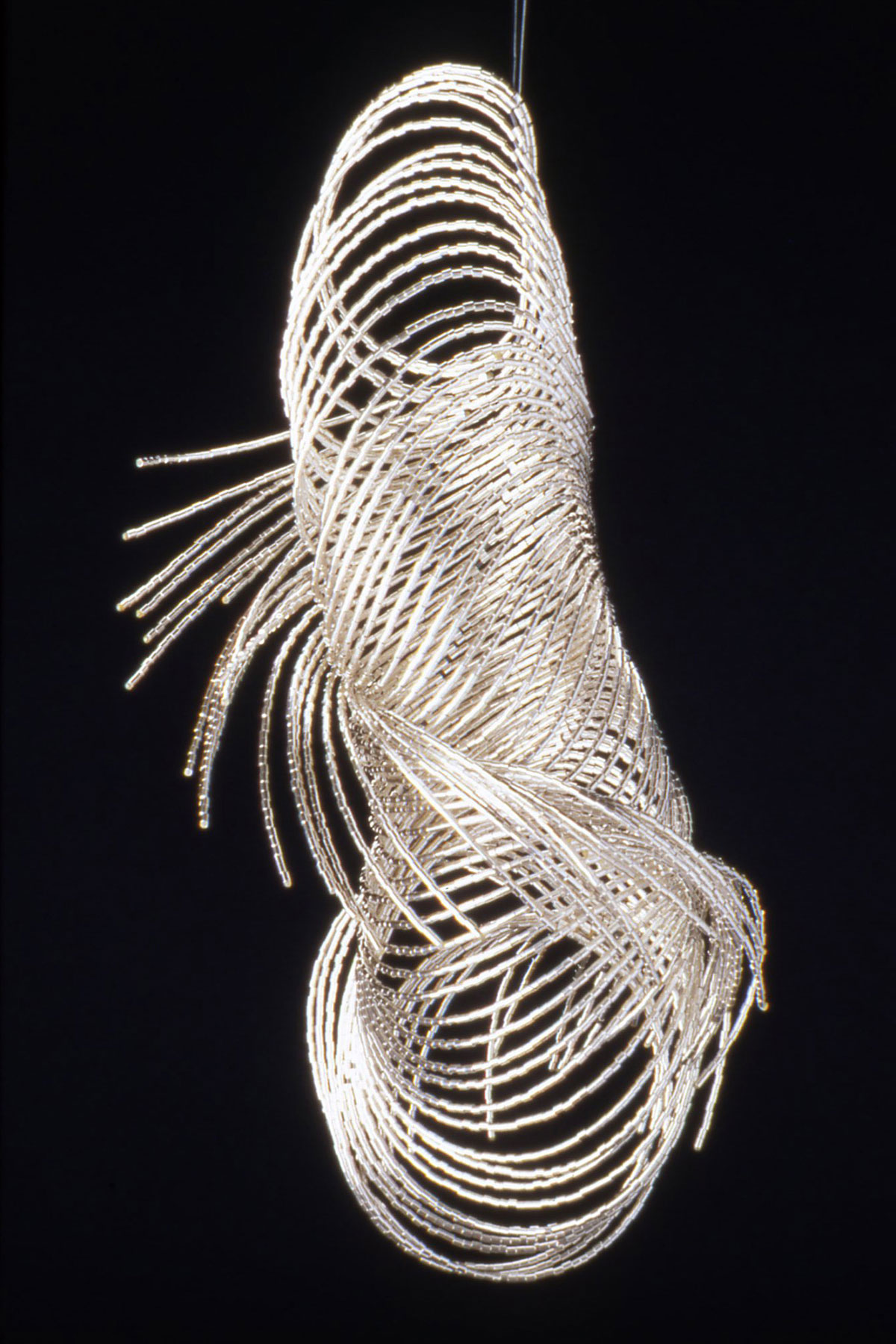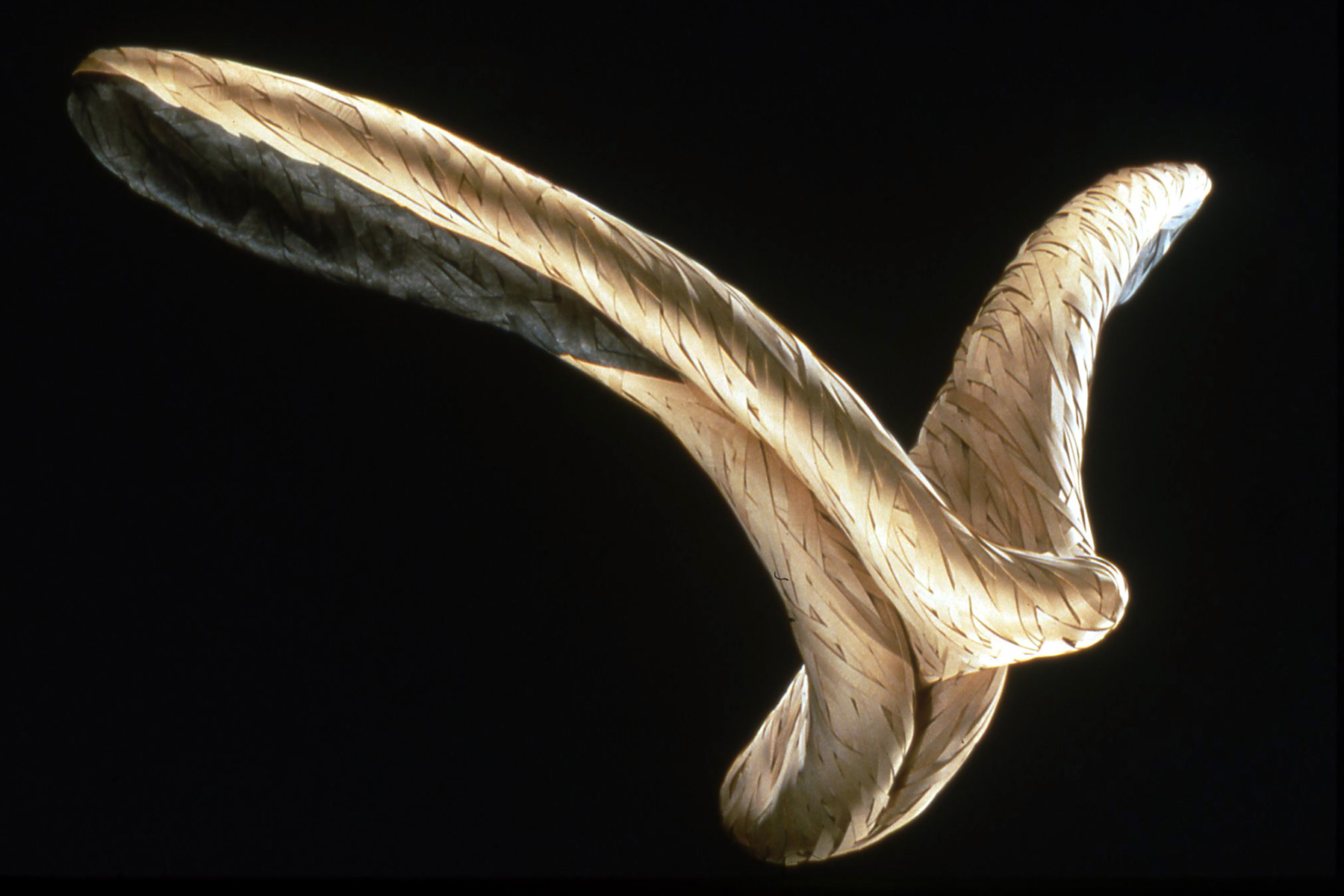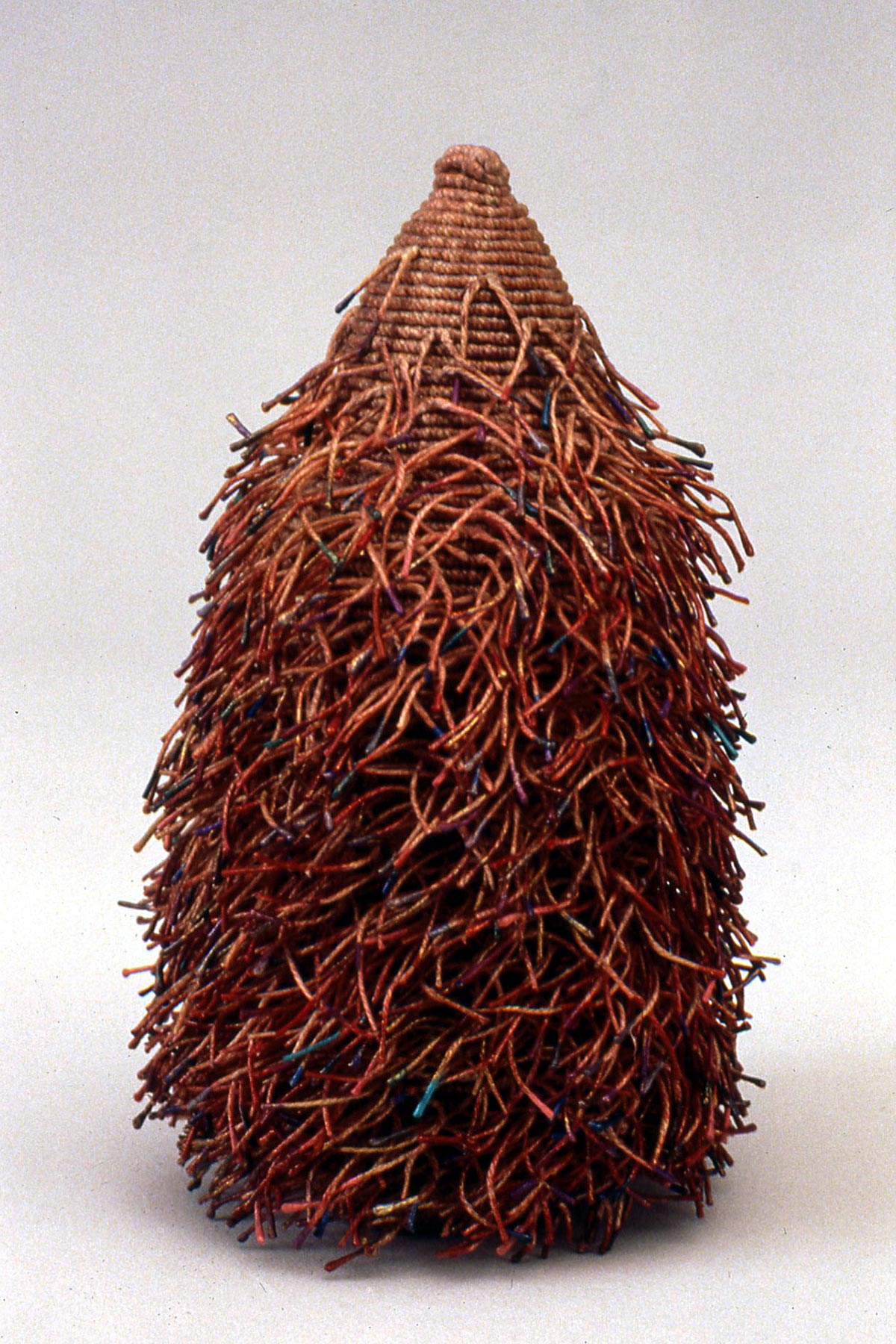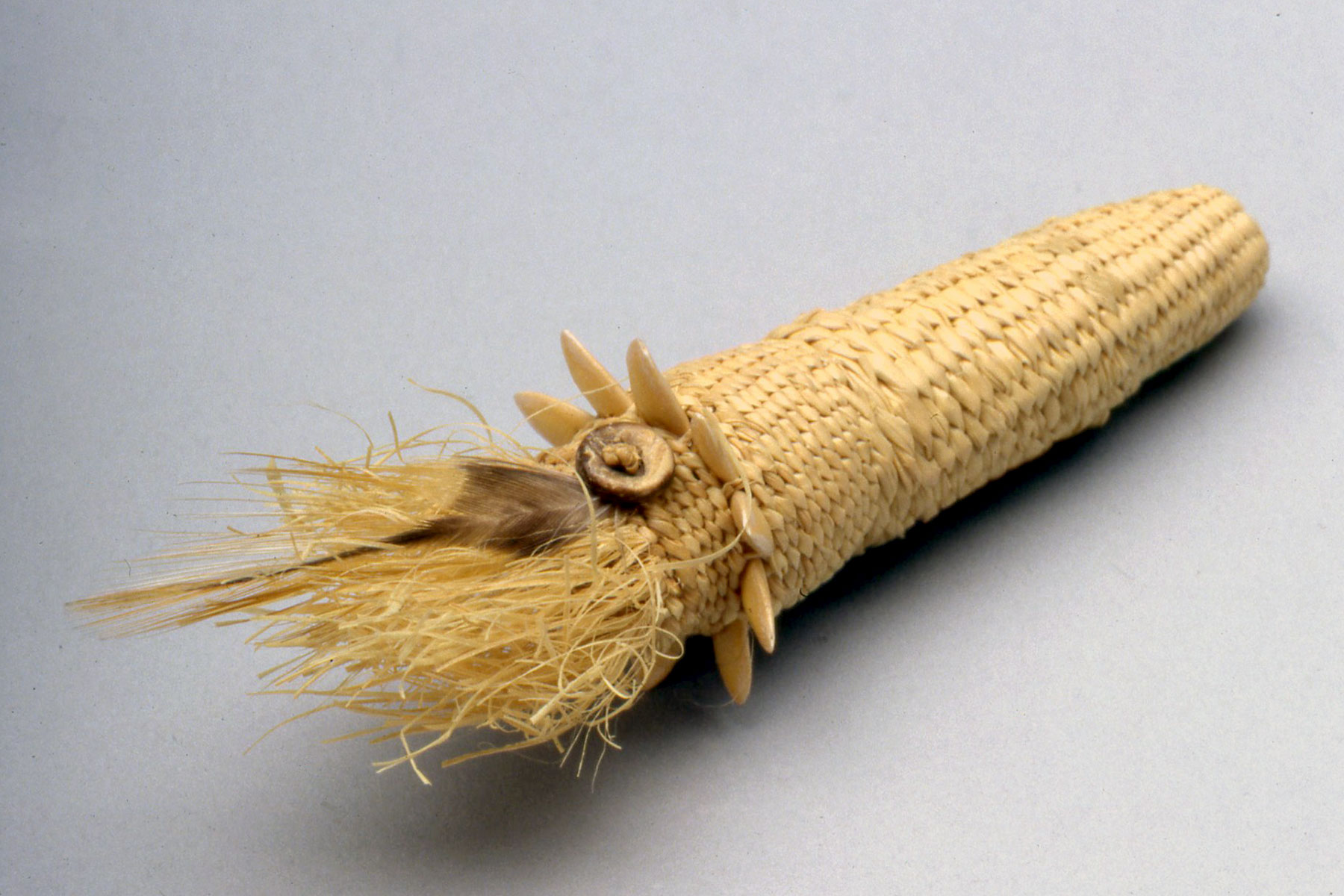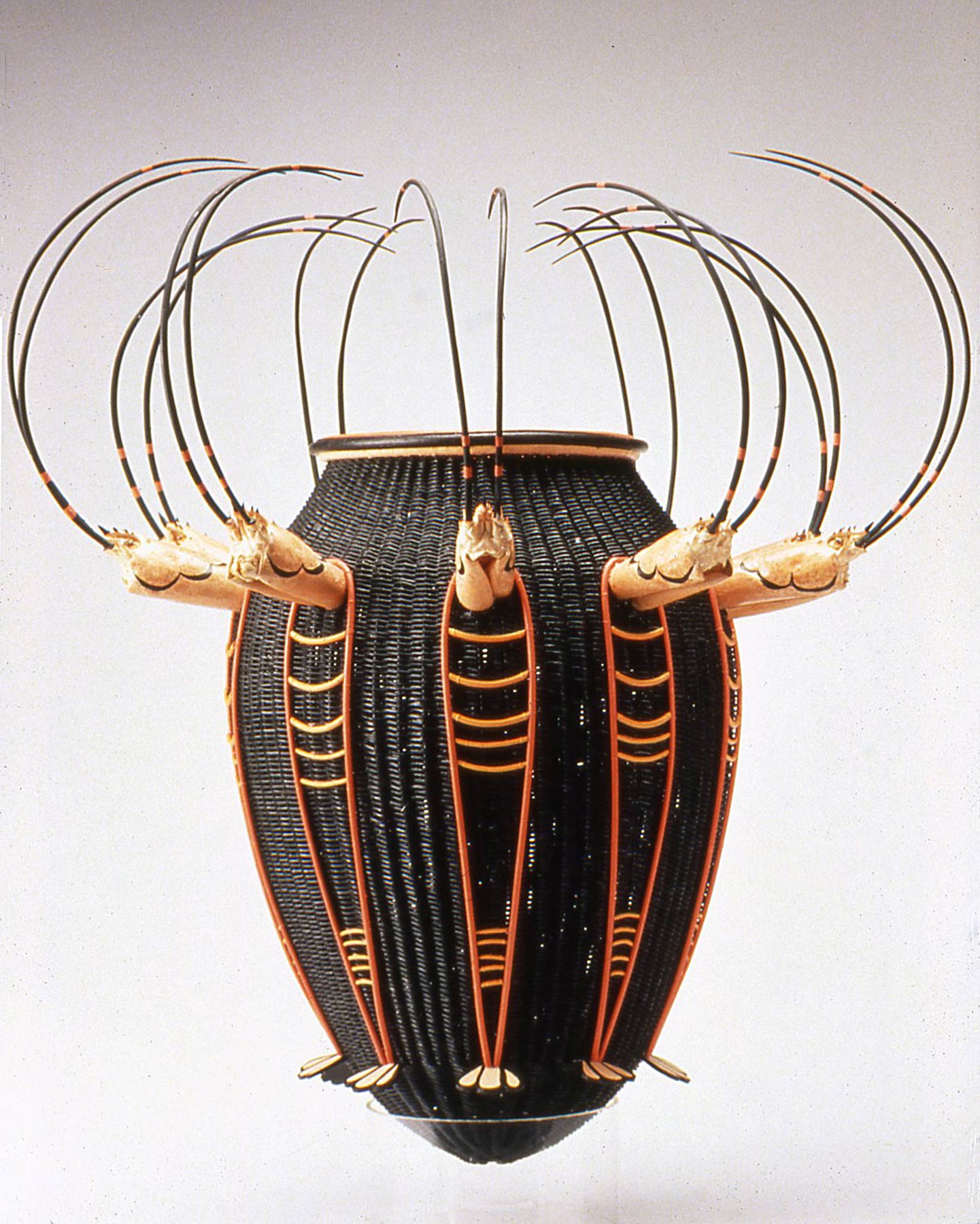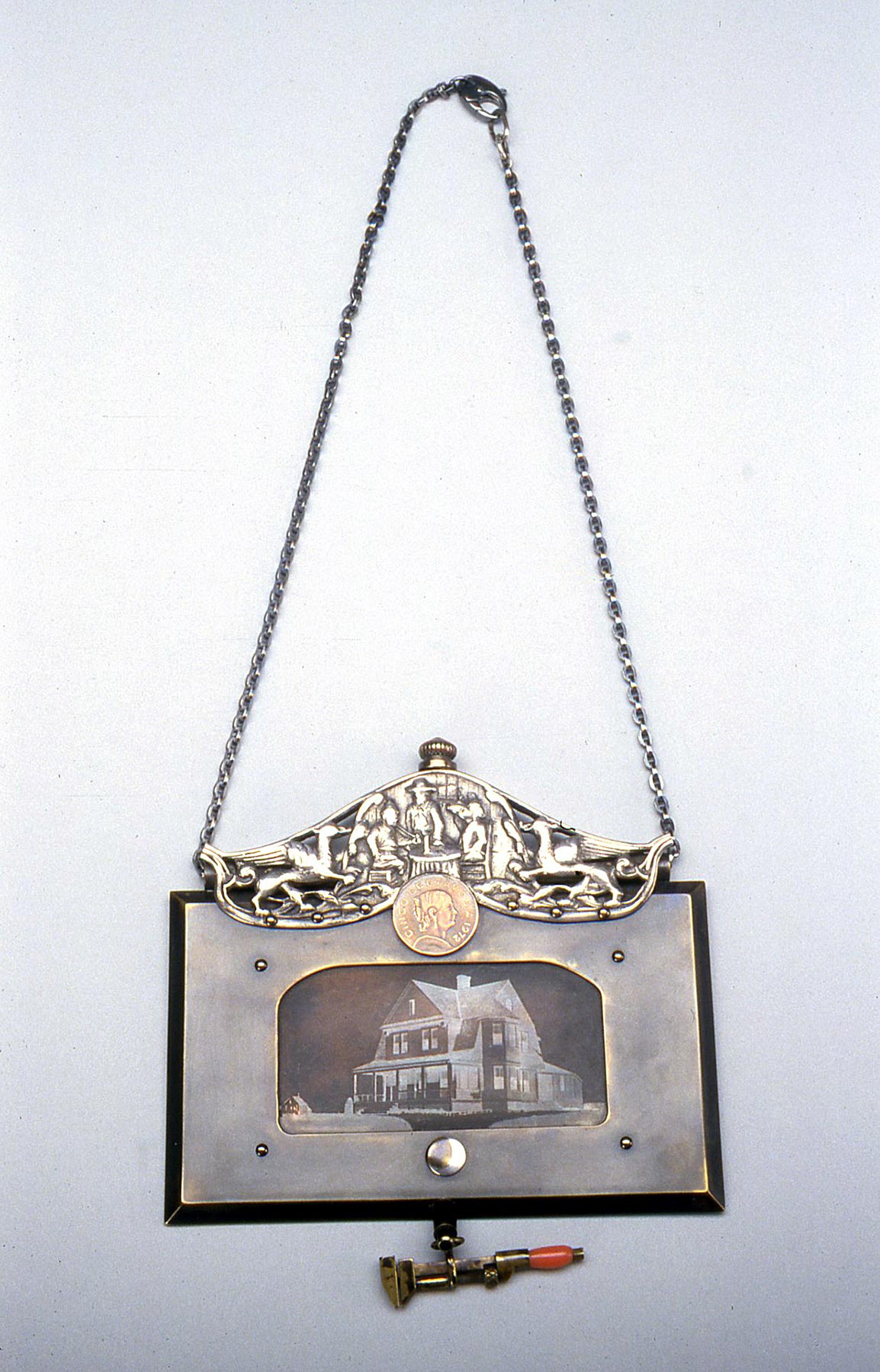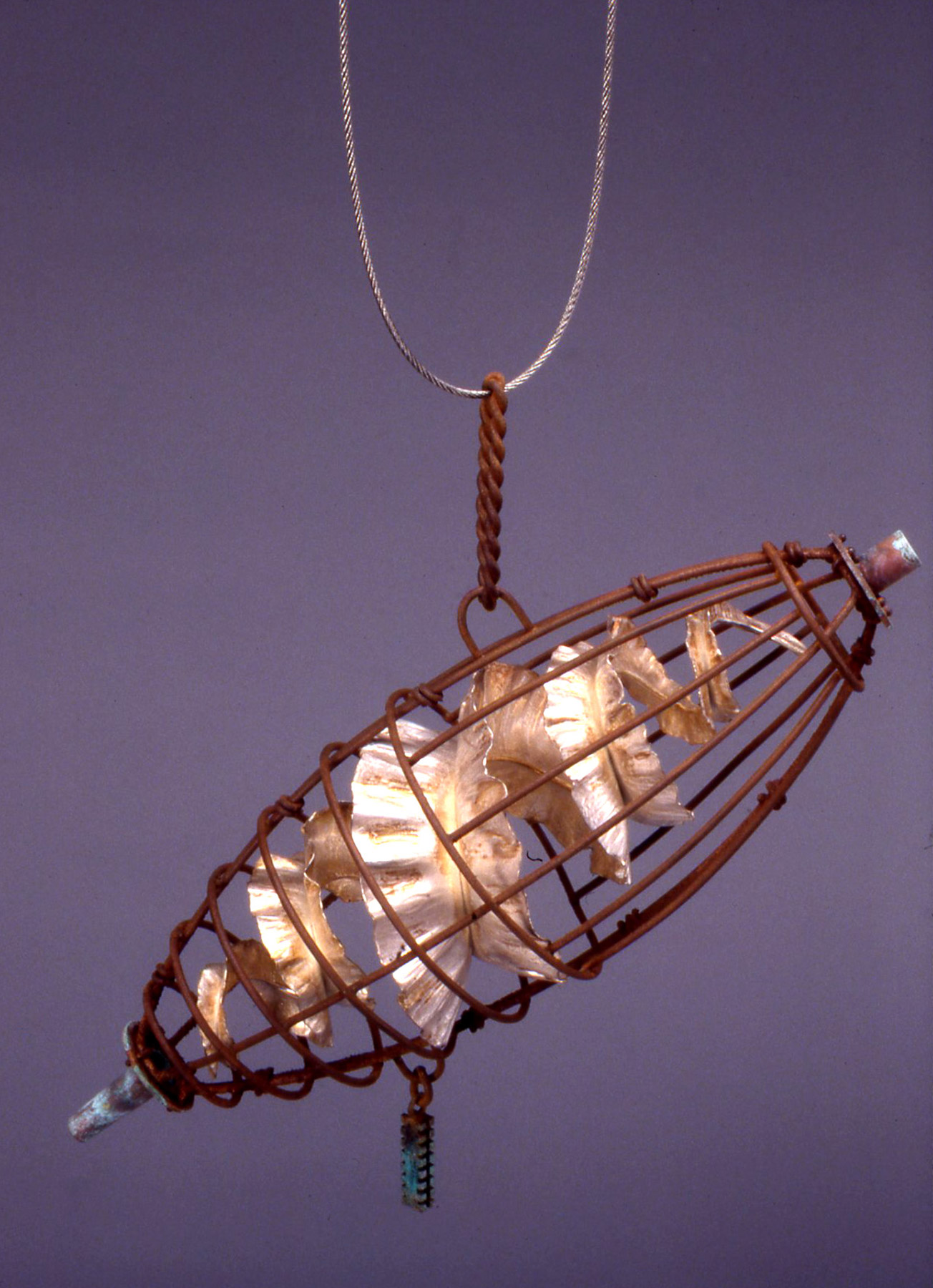
Thomas Mann and Charles Lewon-Brain
Hindenburg 1—Lighter Than Air, 1995
Silver, stainless steel, and brass
Racine Art Museum, Gift of the Artists
Photography: Jon Bolton
Micro/Macro: Works Both Large and Small from RAM’s Collection
February 3 – May 25, 2008
at Racine Art Museum
Scale became a significant consideration for artists working in all media in the mid-twentieth century. During this time, Abstract Expressionist painters like Mark Rothko and Jackson Pollock began to use monumental canvases as vehicles of contemporary expression. In the 1980s and 1990s, installation art—sculptures made up of many three-dimensional parts that filled large gallery spaces—expanded on this interest in magnitude.
In the 1960s, artists of the Studio Craft movement responded to these developments in contemporary painting and sculpture by exploring innovative approaches to create large-sized works in craft media. In their studios, they developed new technologies to achieve scale in their work.
For example, artists working in blown glass, quickly realized that they could mass small blown forms together by either physically adhering one to another or allowing gravity to unite them to form more substantial compositions. Similarly, American Studio Jewelers of the 1970s and onward made a concerted effort to distinguish their work from that of their European counterparts by creating body adornment that approximated the size of small sculptures.
Today, scale continues to impact contemporary crafts. While some artists choose to be consistent by working in one particular size, others create works that respond to the marketplace and the demands of gallery and museum shows, as well as public and private commissions.
Employing different scales generally allows artists to more fully explore their creative impulses. In some cases, artists use small scale to attract the attention of the viewer by requiring more intimate viewing conditions to observe the work in close detail. Sometimes, when artists receive commissions, they create samples or maquettes that provide the client with a smaller version of the piece for review prior to the completion of the final, larger artwork.
Contemporary fiber is most indicative of the trend of creating large-sized objects. In the 1960s, artists like Claire Zeisler began to make monumental off-loom sculptures for museum shows to create strong sculptural statements as fine art, rather than designing for the clothing industry. Similarly, in the 1980s, artists increasingly used natural and industrial materials to redefine the traditional basket form. While continuing to use traditional fiber techniques such as looping, knotting and papermaking, artists reinvented the usual size of the container form. These large fiber objects make strong conceptual statements with their intriguing change in scale.
More About the Exhibition
Micro/Macro: Works Both Large and Small from RAM’s Collection
February 3 – May 25, 2008
at Racine Art Museum

Thomas Mann and Charles Lewon-Brain
Hindenburg 1—Lighter Than Air, 1995
Silver, stainless steel, and brass
Racine Art Museum, Gift of the Artists
Photography: Jon Bolton
Scale became a significant consideration for artists working in all media in the mid-twentieth century. During this time, Abstract Expressionist painters like Mark Rothko and Jackson Pollock began to use monumental canvases as vehicles of contemporary expression. In the 1980s and 1990s, installation art—sculptures made up of many three-dimensional parts that filled large gallery spaces—expanded on this interest in magnitude.
In the 1960s, artists of the Studio Craft movement responded to these developments in contemporary painting and sculpture by exploring innovative approaches to create large-sized works in craft media. In their studios, they developed new technologies to achieve scale in their work.
For example, artists working in blown glass, quickly realized that they could mass small blown forms together by either physically adhering one to another or allowing gravity to unite them to form more substantial compositions. Similarly, American Studio Jewelers of the 1970s and onward made a concerted effort to distinguish their work from that of their European counterparts by creating body adornment that approximated the size of small sculptures.
Today, scale continues to impact contemporary crafts. While some artists choose to be consistent by working in one particular size, others create works that respond to the marketplace and the demands of gallery and museum shows, as well as public and private commissions.
Employing different scales generally allows artists to more fully explore their creative impulses. In some cases, artists use small scale to attract the attention of the viewer by requiring more intimate viewing conditions to observe the work in close detail. Sometimes, when artists receive commissions, they create samples or maquettes that provide the client with a smaller version of the piece for review prior to the completion of the final, larger artwork.
Contemporary fiber is most indicative of the trend of creating large-sized objects. In the 1960s, artists like Claire Zeisler began to make monumental off-loom sculptures for museum shows to create strong sculptural statements as fine art, rather than designing for the clothing industry. Similarly, in the 1980s, artists increasingly used natural and industrial materials to redefine the traditional basket form. While continuing to use traditional fiber techniques such as looping, knotting and papermaking, artists reinvented the usual size of the container form. These large fiber objects make strong conceptual statements with their intriguing change in scale.
More About the Exhibition
Sample of Work in the Exhibition
Click/tap an image for more information
Exhibitions at RAM are made possible by:
Platinum Sponsors
The Estate of Karen Johnson Boyd
David Charak
Judith and David Flegel Fund
Ron and Judith Isaacs
Nicholas and Nancy Kurten

Barbara Waldman
Windgate Foundation
Diamond Sponsors
City of Racine’s Grow Racine Grant
Ruffo Family Foundation
Ruth Arts Foundation
Gold Sponsors
Anonymous
Tom and Irene Creecy
Richard and Patricia Ehlert
Osborne and Scekic Family Foundation
Reliance Controls Community Fund
Trio Foundation of St. Louis
W.T. Walker Group, Inc.
Silver Sponsors
Anonymous
Baird
Beta Diagnostic Labs
A.C. Buhler Family
Lucy G. Feller
Ben and Dawn Flegel
Jim Harris
Sharon and Tom Harty
Horizon Retail Construction, Inc.
Johnson Financial Group
Dorothy MacVicar
Jan Serr and John Shannon
Bronze Sponsors
Ellen and Joseph Albrecht
Susan Boland
Dave’s Wine Garage
Educators Credit Union
Express Employment Professionals
Bill and Debbie Keland
Susan Manalli
Jean and Alex Mandli, Jr.
Norbell Foundation
Cathy Stanghellini
Twin Disc


